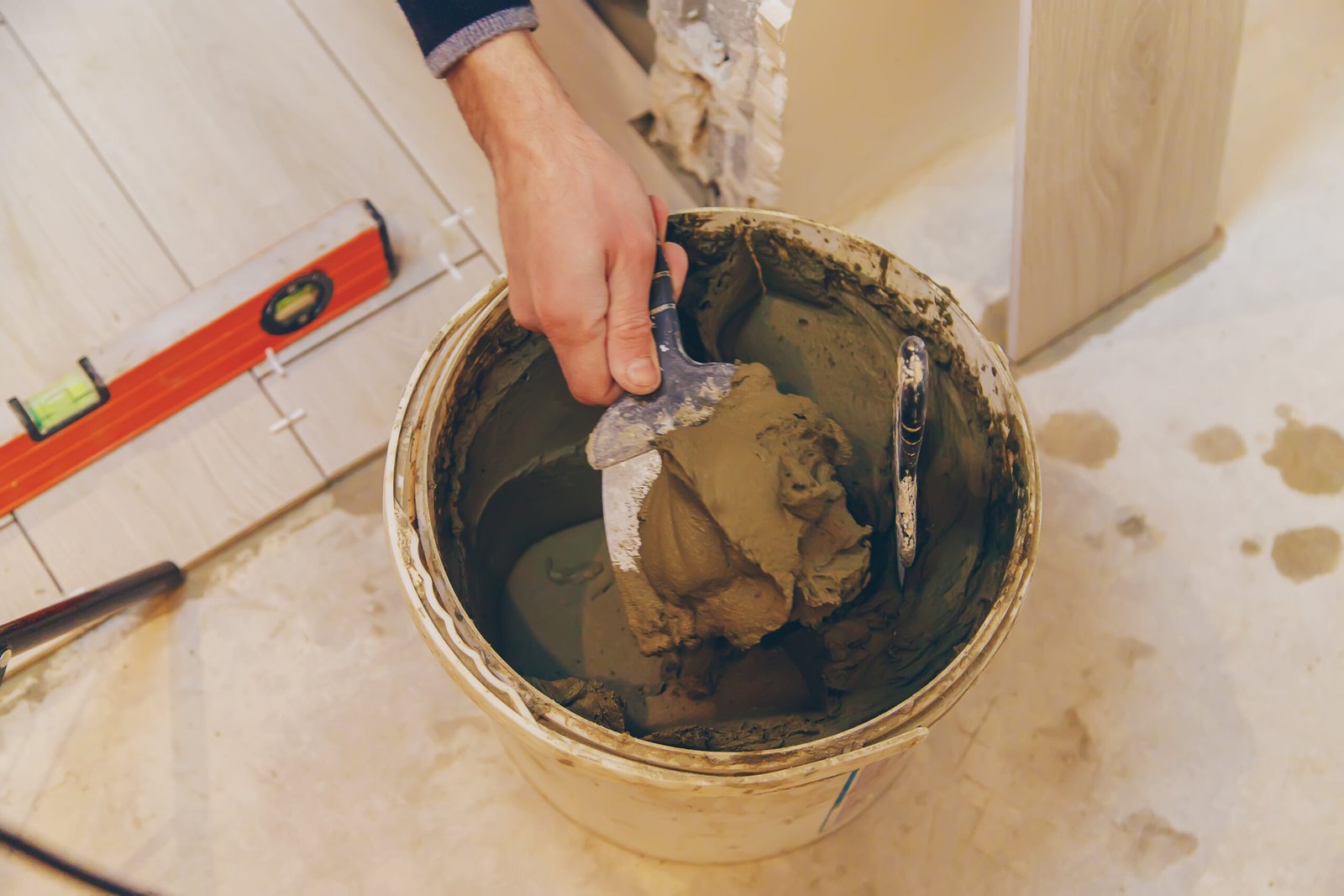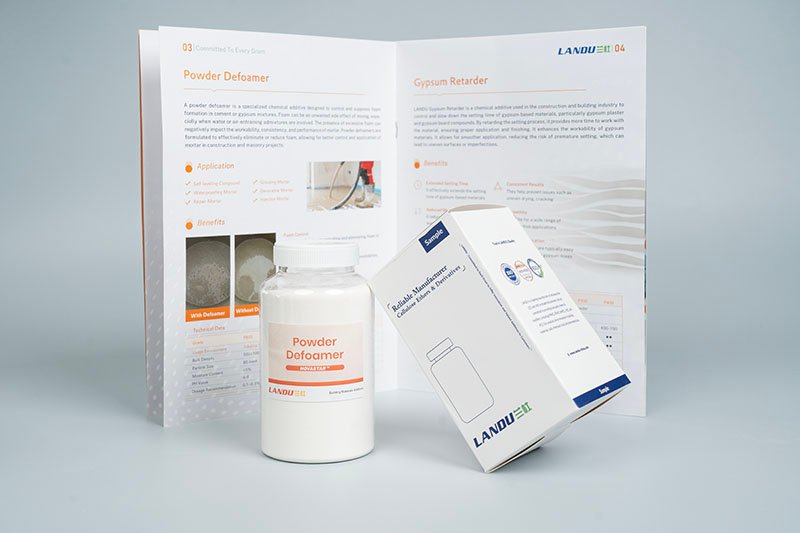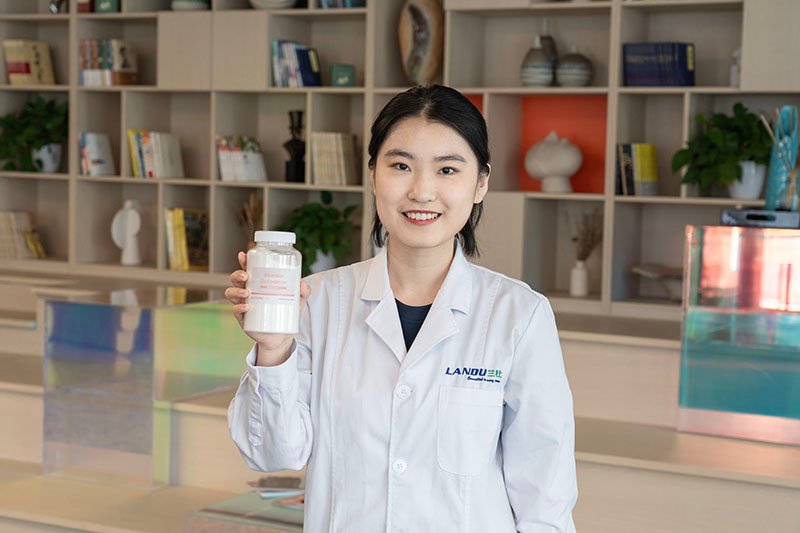Air pockets may appear minor at first glance, but they can fundamentally affect the performance and finish of construction materials. Excessive bubbles in concrete can reduce compressive strength by up to 10–15%, which translates into compromised structural integrity and longer-term durability concerns. In coatings or waterproofing applications, entrapped air can create pinholes that undermine the barrier properties and longevity of the coating system.
In mortars, trapped air reduces compactness, elevates the risk of cracking, and can lead to edge wear and uneven surfaces. At Landu, we recognize these challenges and address them with our Novastar® powder defoamers, designed to deliver reliable, reproducible results across a wide range of cementitious and plaster systems.

What is a Powder Defoamer?
Powder defoamers, such as Novastar®, are modified solid defoamers based on polyether chemistry, purpose-built for dry-mixed materials. Their primary role is to remove existing foam and to prevent new foam from forming—effectively defoaming while actively inhibiting foam generation, ensuring a cleaner, more stable final product.
Working Principle
Our powder defoamers are formulated from high-performance components—examples include silicone, polyether, or mineral oil derivatives—processed into micron-sized particles. When dispersed in dry mixes, these particles rapidly migrate to the air–water interface, where they reduce surface tension locally. This weakens the foam walls, causing instability and rupture of the bubbles. As a result, the foam collapses and the entrained air is minimized, leading to reduced porosity and improved surface quality in the cured material.
Powder vs. Liquid Defoamer
✨ Powder Defoamers
Superior storage stability, easy to handle and transport, blend smoothly into dry powders without compromising flow or workability. Provide a cleaner, more predictable pathway to foam control in cementitious and gypsum-based formulations.
💧 Liquid Defoamers
Highly effective in aqueous systems but require careful management to prevent settling, phase separation, or adverse reactions with water-based admixtures and freezing conditions.
Key Factors to Consider When Selecting Powder Defoamers
1. Material Compatibility
Compatibility with your formulation is essential. For instance, tile adhesives that incorporate HPMC (hydroxypropyl methylcellulose) or redispersible polymer powders can be sensitive to certain defoamer chemistries. An incompatible defoamer might compromise workability, cause phase separation, or alter the rheology of the mix. Conversely, a well-matched defoamer will integrate seamlessly, preserving or even improving consistency, spread, and open time.
💡 Tip:
Conduct compatibility testing as a standard part of formulation development, particularly for complex systems with multiple functional ingredients.
🔬 Test Method:
Introduce the defoamer at 0.1%–0.3% by weight of the dry mix and evaluate for defoaming efficiency, workability, and any unexpected changes in viscosity or rheology.
2. Defoaming Efficiency and Foam Inhibition
Per ASTM D892 (as applied in this context), a high-quality powder defoamer should remove a substantial portion of air bubbles within a short time window. A best-in-class product should rapidly eliminate visible surface bubbles during mixing and initial blending, prevent additional air from becoming trapped in the final cured material, and maintain its performance over time, resisting degradation during storage and after prolonged layup or transport.
In practice, users look for quick action during mixing, durable performance after cure, and stable behavior across different environmental conditions (temperature, humidity) and storage periods.
3. Application Adaptability
Different construction systems impose different demands. A defoamer that performs well in cement-based mortars might not deliver the same results in gypsum-based formulations or in plaster systems. Novastar® provides a spectrum of defoamer profiles tailored to specific material classes, allowing practitioners to select a product that aligns with the chemistry and performance targets of their particular application.
4. Low Dosage
Economic and performance considerations favor low dosing. Powder defoamers are typically added at small percentages (commonly 0.1%–0.3% by weight) to minimize any impact on other material properties, while still delivering robust foam control. Lower dosages can also reduce the risk of interfering with set time, polymer dispersion, or other admixture interactions.
5. Environmental Protection and Safety
Regulatory pressures continue to tighten around industrial chemicals. Selecting eco-friendly defoamers is not only good practice but increasingly a requirement. Novastar® powder defoamers are designed to meet modern environmental expectations, helping manufacturers meet sustainability goals without compromising performance.
Typical Application Cases of Powder Defoamer in Construction Projects
Wall Putty Construction
A Southeast Asian customer confronted persistent bubbles and pits in a polymer-modified putty after drying. The prior defoamer's inconsistent performance manifested as surface imperfections, undermining both appearance and preparation for subsequent finishing coats. After switching to Novastar® powder defoamer, the results were pronounced.
📊 Results Achieved:
Trapped air reduced by more than 60%
Surface smoothness and overall finish visibly improved
Lower dosage required (0.3% compared with 0.6% for the previous product)
No adverse effects on workability or setting time
The outcome was not only a higher-quality surface but also a reduction in production costs and material waste, contributing to improved yield and reduced reject rates.
High-Rise Concrete Pouring
In a demanding high-rise project, ready-mixed concrete exhibited excessive air content that threatened strength development and surface quality. By introducing 0.1% Novastar® powder defoamer into the mix, the concrete achieved strength targets and eliminated surface honeycombing, leading to a denser, more uniform concrete with improved durability and long-term performance.
Common Types of Powder Defoamers
📝 Notes on selection: The table above outlines general tendencies. In practice, the best choice depends on the full formulation, including water content, type and amount of cement or gypsum, presence of polymers, admixtures (superplasticizers, air-entraining agents), and the specific performance goals (surface quality, density, setting behavior). Matching a defoamer to the system often yields better results than relying on a single universal solution.
Novastar® Powder Defoamer: The Optimal Choice
Why Choose Landu?
Landu combines decades of expertise with cutting-edge technology to deliver superior defoaming solutions. Our commitment to quality, innovation, customization, and sustainability ensures that you receive not just a product, but a partnership dedicated to your success in construction materials.
Kvalitetskontrol
ISO 9001 certified manufacturing with rigorous testing at every stage ensures consistent, reliable product performance batch after batch.
Learn More →Research & Development
Expert chemists and state-of-the-art laboratories drive continuous innovation, developing advanced defoaming solutions for evolving industry needs.
Learn More →Customized Solutions
Tailored formulation development and technical support optimize defoamer performance for your specific application requirements.
Learn More →Bæredygtighed
Eco-friendly formulations with low VOC, no APEO or heavy metals, supporting your commitment to sustainable construction practices.
Learn More →Konklusion
Choosing the right powder defoamer is about more than simply eliminating foam; it is about elevating the overall performance, efficiency, and reliability of your construction products from batch to batch. With Novastar® powder defoamers, Landu offers a proven solution that supports consistent production quality, improved surface finishes, and more predictable curing behavior.
LANDU team is available to guide you through formulation selection, lab testing, and custom recommendations to optimize performance for your specific application. From plant floor to field application, Novastar® can help you achieve lower defect rates, reduced material costs, and enhanced product performance.


